Research Article
Issue Reviewers
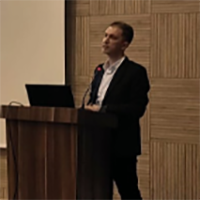







 Web
Web
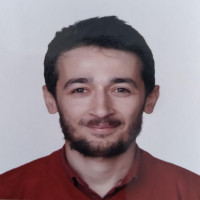
Mehmet Erdi Korkmaz graduated from his Phd in 2018. He is currently working as Assoc. Prof. Dr. at Karabük University. He got his master degree in Mechanical Engineering from the same university. He also takes a Bachelor degree in mechanical engineering from Middle East Technical University. He had been studied as guest researcher at Ghent University, Belgium in 2017. His research areas are mechanical behaviour of materials, Constitutive material model parameters, Finite element modeling of machining process, tribology in machining and additive manufacturing. He has authored or co-authored over 50 publications, including scientific papers in high impact international journals and conference proceedings. His expertise and contributions in the field of machining have afforded him many collaborative works with important Institutions. He is a reviewer for many international Journals (for Elsevier, Springer, Sage, etc.).
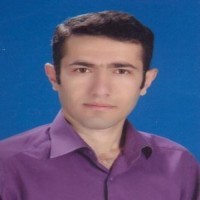
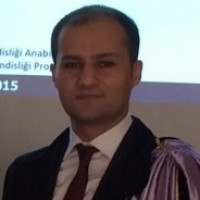

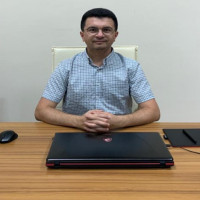
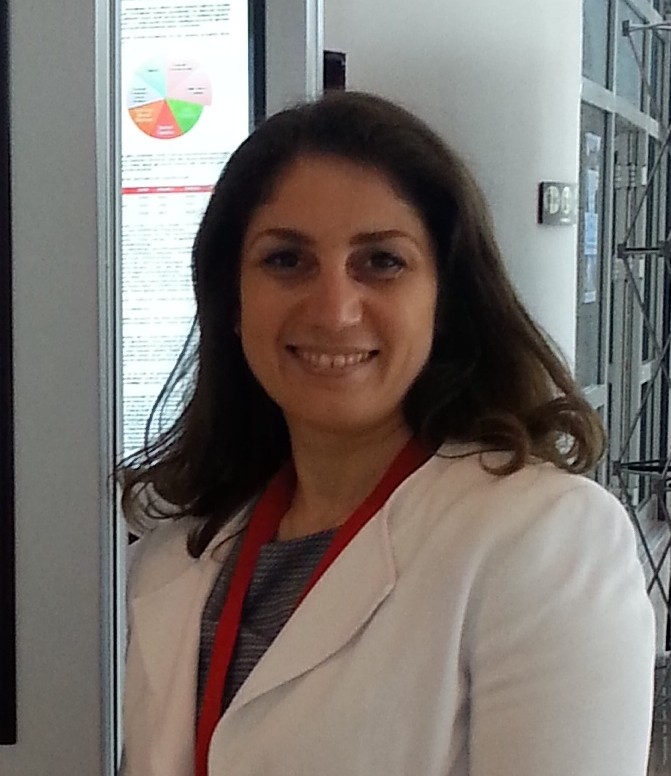





 Web
Web



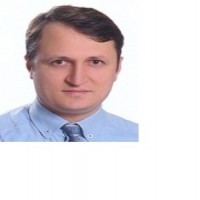
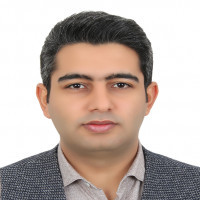



 Web
Web
Usame Demir joined the Mechanical Engineering Department at Bilecik Şeyh Edebali University at 2021. He received his BE (2010), MSc (2013) and PhD (2017) from Sakarya University. His doctoral research was in Electromechanic variable valve timing for internal combustion engine modelling using computational fluid dynamics (CFD). He has interest in the following research areas are internal combustion engines, HCCI engine, alternative fuels, combustion modelling using SRM and CFD simulation tools.
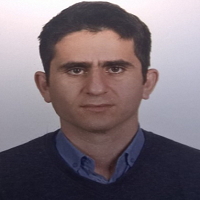
Aim & Scope
The European Mechanical Science (EMS) journal values original scientific research in these areas and aims to support progress in the field of mechanical engineering by sharing these contributions with a diverse readership. With a mission to contribute to the scientific community, the journal brings together researchers, engineers, and academics, fostering knowledge exchange. EMS is dedicated to being an ethical, high-quality academic platform that produces diverse knowledge across various topics in mechanical engineering.
The European Mechanical Science (EMS) journal is an international platform that encourages the sharing of innovative research in the field of mechanical engineering. The aim of the journal is to contribute to scientific knowledge by encompassing a broad spectrum of disciplines within mechanical engineering. It focuses on original research articles and review papers in the following main areas:
- Solid Mechanics,
- Material,
- Automotive,
- Fluid Mechanics,
- Thermal,
- Engine and Power,
- Dynamics and Control,
- Robotics and Mechatronics,
- Transportation,
- Computational Mechanics,
- Design, Systems, Manufacturing,
- Biomedical,
- Process, and Aerospace.
Author Guidelines
All manuscripts must be in English. Pages should be numbered sequentially. The manuscript should be composed in accordance with the Article Template (https://dergipark.org.tr/tr/download/journal-file/17712 ) given above. The maximum length of contributions is 20 pages.
SUBMISSION
All manuscripts must be submitted electronically via the Internet through the online system for EMS journals at https://dergipark.org.tr/tr/pub/ems. After selecting the journal, you will be guided stepwise through the creation and uploading of the various files. Papers are accepted for evaluation on the understanding that:
• they have not been published,
• they are not being considered for publication simultaneously elsewhere,
• they are not going to be submitted for publication elsewhere.
Checklist
2. TITLE: The title of the manuscript should be written in Times New Roman, 14 pt., and centered with the first letters capitalized, the title should be appropriate to the text, short and clear.
All first-degree titles in the text should be written in capital letters, in second-degree titles, the first letters of all words should be capitalized, for third and lower-degree titles, only the first letter of the title should be capitalized.
3. ABSTRACT: It should be written in Times New Roman font, and in 10 pt. not exceeding 250 words.
4. KEYWORDS: 4-6 significant keywords should follow the abstract to aid indexing.
5. MANUSCRIPT STRUCTURE: In general, it should cover the introduction, materials and methods, results and discussion, and conclusions sections.
Notes:
The introduction section should provide a review of recent literature and sufficient background information to allow the results of the article to be understood and evaluated.
The materials and methods section should provide details of the materials and methods used.
The results section should provide clearly and concisely present the data, using figures and tables
The discussion section should describe the relationships and generalizations shown by the results and discuss the significance of the results, making comparisons with previously published work. (It may be appropriate to combine the Results and Discussion sections into a single section to improve clarity.)
The conclusions section should present one or more conclusions drawn from the results and subsequent discussion and should not duplicate the Abstract.
Acknowledgment (optional) of collaboration or preparation assistance may be included. Please note the source of funding for the research.
6. REFERENCES: must be cited consecutively in the text using square brackets [1] and collected together in a reference list at the end of the manuscript. (In references to be added at the end of sentences, a period sign should be placed after the reference given in square brackets.)
Notes:
A reference list must be included using the following information as a guide. Only cited text references are to be included. Each reference is to be referred to in the text by a number enclosed in a square bracket (i.e. [3] or [2] to [4] for more references; do not combine more than 3 references, explain each).
References must be numbered and ordered according to where they are first mentioned in the paper, not alphabetically. All references must be complete and accurate. Please add the DOI code if available.
Journal Papers:
Surname 1, Initials, Surname 2, Initials (year). Title. Journal, volume, issue, pages, DOI code.
[1] Calikoz, R., Ozcanli, B., Serin, F. (2017). Simulating nonlinear materials under vertical forces by using intelligent. European Mechanical Science, 57(7-8): 531-538. doi:10.5545/ems.2017.013.
Journal titles should not be abbreviated. Note that the journal title is set in italics.
Books:
Surname 1, Initials, Surname 2, Initials (year). Title. Publisher, place of publication.
[2] Ozgur, M.P. (2012). Fundamentals of Mechanical Engineering. Gunlubey, Ankara.
Chapters in Books:
Surname 1, Initials, Surname 2, Initials (year). Chapter title. Editor(s) of book, book title. Publisher, place of publication, pages.
[3] Akarca, G., Gelidor, M. (2016). Mechanical robotic systems. Calikca, V., Kurbetoglu, A., Merdan, M. (Eds.), Cutting Edge Robotics. Literatur Bergli, Mammendorf, 553-576.
Proceedings Papers:
Surname 1, Initials, Surname 2, Initials (year). Paper title. Proceedings title, pages.
[4] Seferci, N., Malikoglu, S., Tosun, N. (2009). Applied mechanic in process industry. IMSEC 2016 Conference Proceedings, 422-427.
Published Thesis:
Surname, Initials (year). Title of the thesis, thesis type (Msc, PhD), university or institute where it was presented, country.
[5] Karacor, B. (2020). The usage of natural fiber reinforced hybrid composite materials as an alternative to automobile interior plastics, Msc, Çukurova University, Turkey.
Web Page:
As a minimum, the full URL should be given and the date when the reference was last accessed. Any further information should also be given if known (DOI, author names, dates, reference to a source publication, etc.).
[6] Kompozitshop, (accessed date: 13 June 2021). https://www.kompozitshop.com/bazalt-fiber-kumas-200grm2-plain.
Standard Method:
The number of the standard, (year). The name of the standard, publisher.
[7] ASTM D3039, (2000). Standard Test Method for Tensile Properties of Polymer Matrix Composite Material, ASTM International.
FIGURES
Figures (figures, graphs, illustrations digital images, photographs) must be cited in consecutive numerical order in the text and referred to in both the text and the captions as Figure 1, Figure 2, etc. Figures should be prepared without borders and on white grounding. If a figure is composed of several parts, please mark each part with a), b), c), etc., and provide an explanation for each part in the Figure caption. Letters and numbers in the figures should be readable. The caption should be self-explanatory, times new roman, 12pt, and justify both sides. Also, the captions should be placed below the figures.
Example:
Figure 1. The caption should be self-explanatory.
Graphics (submitted as supplementary files) may be exported in a resolution good enough for printing (min. 300 dpi) in any common format, e.g. TIFF, BMP, GIF or JPG, PDF, and should be named Fig1.jpg, Fig2.tif, etc. However, graphs and line drawings should be prepared as vector images, e.g. CDR, AI.
Multi-curve graphs should have individual curves marked with a symbol or otherwise provide distinguishing differences using, for example, different thicknesses or dashing.
TABLES
Tables should carry separate titles and must be numbered in consecutive numerical order in the text and referred to in both the text and the captions as Table 1, Table 2, etc. In addition to the physical quantities, such as t (in italics), the units (normal text) should be added in square brackets. Tables should not duplicate data found elsewhere in the manuscript. Tables should be prepared using a table editor and not inserted as a graphic. Letters and numbers in the tables should be readable. The caption should be self-explanatory, times new roman, 12pt, and justify both sides. Also, the captions should be placed above the tables.
Example:
Table 1. The caption should be self-explanatory.
FORMULAS AND UNITS
All formulas in the text should be written in equation format. Formulas should be given sequence numbers as (1), and (2). All units must be in the SI unit system.
Example:
F=ma (1)
NOMENCLATURE (optional)
It can be given before the references at the end of the text.
ACKNOWLEDGMENT (optional)
If people or institutions are to be thanked, they should be written in this section and given before the references.
Research ethics
If not required, please insert
- “The local Institutional Review Board deemed the study exempt from review” if the IRB specifically exempted the study from review OR
- “Not applicable.”
Author contributions
Use the following structure to clarify each author's role:
- Conceptualization: [Author names]
- Methodology: [Author names]
- Formal Analysis: [Author names]
- Investigation: [Author names]
- Resources: [Author names]
- Data Curation: [Author names]
- Writing - Original Draft Preparation: [Author names]
- Writing - Review & Editing: [Author names]
- Visualization: [Author names]
- Supervision: [Author names]
- Project Administration: [Author names]
- Funding Acquisition: [Author names]
-
Mandatory default statement:
- "The author(s) have accepted responsibility for the entire content of this manuscript and approved its submission."
Competing interests
If none of the authors has a conflict of interest, please insert
- “The author(s) state(s) no conflict of interest.”
Research funding
(add funding agency and grant number).
If not required, please insert
- “None declared.”
Data availability
- “The raw data can be obtained on request from the corresponding author.”
If the type of study does not include raw data, please insert
- “Not applicable.”
-
Peer-review
Ethical Principles and Publication Policy
European Mechanical Science (EMS) follows certain ethical standards for publication, existing to ensure high-quality scientific publications, public trust in scientific findings, and due credit for original ideas. EMS is connected to the Committee on Publication Ethics (COPE), abides by its Code of Conduct, and aims to adhere to its Best Practice Guidelines.
Committee on Publication Ethics (COPE). (2011, March 7). Code of Conduct and Best-Practice Guidelines for Journal Editors. Retrieved from https://publicationethics.org/files/Code_of_conduct_for_journal_editors_Mar11.pdf
Authors who submit papers to EMS certify that his or her work is original and is not published or under publication consideration elsewhere. In addition, authors confirm that submitted papers have not been copied or plagiarized, in whole or in part, from other papers or studies. Authors certify that he or she does not have potential conflicts of interest or partial benefits associated with his or her papers.
EMS will check for plagiarism in all submitted articles prior to publication. If plagiarism is detected at any stage of the publication process, the author will be instructed to rewrite the manuscript. Every submission will be scanned by Turnitin to prevent plagiarism. If any manuscript is 20% plagiarized the article will be rejected and the author will be notified. We strongly recommend that authors check paper content before submitting for publication. Plagiarism can be checked by using free online software, like (FREE PLAGARISM CHECKER at http://www.quetext.com.)
EMS is committed to objective and fair blind peer reviews of submitted papers and the prevention of any actual or potential conflicts of interest between writers and reviewers.
Authors must confirm the following:
1. Manuscripts must be the original work of the submitting author.
2. Submitted manuscripts must be unpublished.
3. There should be no conflict of interest. If it exists, it must be clearly stated.
4. Authors should cite all data sources used in the preparation of the manuscript.
Please note: It is unethical to submit a manuscript to more than one journal concurrently.
Reviewers must confirm the following:
1. Manuscripts are reviewed fairly based on the intellectual content of the paper regardless of gender, race, ethnicity, religion, citizenship or political view of the author(s).
2. Any observed conflict of interest during the review process must be sent to the editor.
3. Information that may be a cause for rejection of publication must be sent to the editor.
Editors must confirm the following:
1. Manuscripts are reviewed fairly based on the intellectual content of the paper regardless of gender, race, ethnicity, religion, citizenship or political view of the author(s.)
2. Information pertaining to manuscripts is kept confidential.
3. Any observed conflict of interest pertaining manuscripts must be disclosed.
Please note: The Editorial Board takes responsibility for making publication decisions on submitted manuscripts based on the reviewer’s evaluation of the manuscript, policies of the journal editorial board, and legal efforts to prevent plagiarism, libel, and copyright infringement
Note: Author should make corrections in 2 months, otherwise paper will rejected.
Policies
Peer Review Policy
The author(s) of the present study and the journal accept(s) the ethical responsibilities that fit the PUBLICATION ETHICS. Each author is responsible for the content of his or her article. Articles submitted for publication are checked by the Turnitin (Professional Plagiarism Prevention) program. If an article contains plagiarism or self-plagiarism in more than 20% of the manuscript, it will be returned to the author for appropriate citation and correction.
• Submission of the same manuscript to different journals will not be accepted.
• Submissions with contents outside the scope of EMS will not be considered for review.
• Submissions will have a blind peer review.
• All papers are expected to have original content. They should not have been previously published or under review.
• The journal requires a minimum of three independent reviewers. All submissions are subject to a blind peer review.
• Publication decisions are made by the journal's Editor-in-Chief on the basis of the reviewer' reports.
• Submitted papers and reviewer reports are archived whether they are published or not and are not returned.
• Authors who want to discontinue the publication process after submission to EMS have to apply to the editorial board in a written correspondence.
• Authors are responsible for the writing quality of his or her papers.
• After submitting an article to the EMS, a fee is charged regardless of the acceptance/rejection condition.
Open Access Copyright Policy
Open access (OA) journals are scholarly journals that are available online "without financial, legal, or technical barriers other than those inseparable from gaining access to the internet itself.” Open Access (OA) provides unlimited access and reuseability of research publications online for free. Therefore, the open access creates the network for reaching the widest possible audience, sharing the entire papers and building upon them.
European Mechanical Science (EMS) has signed the Budapest Open Access Initiative and shows its “openness” clearly in a standardized form.
EMS also supports the Budapest Open Access Initiative definition of ''Open Access,'' which is defined as:
“It has free availability on the public internet, permitting any users to read, download, copy, distribute, print, search, or link to the full texts of these articles, crawl them for indexing, pass them as data to software, or use them for any other lawful purpose, without financial, legal, or technical barriers other than those inseparable from gaining access to the internet itself. The only constraint on reproduction and distribution, and the only role for copyright in this domain, should be to give authors control over the integrity of their work and the right to be properly acknowledged and cited.”
Articles published in EMS will be Open-Access articles distributed under the terms and conditions of the Creative Commons Attribution License
EMS is licenced by Creative Commons Attribution-ShareAlike 4.0 International License.
You can find information about CC-BY-SA please click https://creativecommons.org/licenses/by-sa/4.0/legalcode
The auhtor(s) retain all copyrights of their articles. However, authors grant the publisher non-exclusive publishing rights to publish the articles.
Archieving Policy (LOCKSS)
The LOCKSS system has permission to collect, preserve, and serve this Archival Unit.The European Mechanical Scienceis using the LOCKKS archiving system.
The LOCKSS Program, based on the program used at Stanford University Libraries, provides libraries and publishers with award-winning, low-cost, open source digital preservation tools to preserve and provide access to persistent and authoritative digital content.
The LOCKSS Program (https://www.lockss.org/) is an open-source, library-led digital preservation system built on the principle that “lots of copies keep stuff safe.” The LOCKSS Program develops and supports libraries using an open source peer-to-peer digital preservation software.
The LOCKSS system allows librarians to access to the e-content to which they subscribe, restoring the print purchase model with which librarians are familiar.
The Global LOCKSS Network preserves today's e-journals and e-books for tomorrow's readers. The Global LOCKSS Network is a proven preservation approach that uniquely empowers both libraries and publishers. It enhances a library's value by restoring library collections via a locally installed "LOCKSS box", which is essentially a digital bookshelf. The Global LOCKSS Network enhances a publisher's value by preserving the original published artifact, including branding, historical context, and underlying files. It protects the publisher's interest by driving all reader traffic to their web site. The Global LOCKSS Network is administered and managed by the Stanford University Libraries LOCKSS Program. See the LOCKSS Program website for additional information, http://www.lockss.org/lockss/Home.
A detailed explanation of what sets the LOCKSS software apart and how preservation works in the LOCKSS network (e.g. technical infrastructure, security) can be found in the following link: https://www.lockss.org/about/how-it-works/.
EMS LOCKSS data can be found in the following link: https://dergipark.org.tr/tr/pub/ems/lockss-manifest
Complaint Policy
Complaints are welcome as they provide an opportunity for improvement. Responses to complaints should be quick, helpful, and constructive. Please address complaints with a volume number, issue number, paper ID, paper title, and page number.
European Mechanical Science(EMS) accepts the following complaints:
• Authorship complaints
• Plagiarism complaints
• Multiple, duplicate, and concurrent publications or simultaneous submissions
• Allegations of research errors and fraud
• Research standards violations
• Undisclosed conflicts of interest
• Reviewer bias or competitive/harmful acts by reviewers
Policy for Handling Complaints
If the Journal receives a complaint that any contribution to the Journal infringes intellectual property rights or contains material inaccuracies, libelous materials, or otherwise unlawful materials, the Journal will investigate the complaint. An investigation may include a request that the parties involved substantiate their claims (the Journal will make a good faith determination whether to remove the allegedly wrongful material). A decision not to remove material should represent the Journal's belief that the complaint is without sufficient foundation, or if well‐founded, that a legal defense or exemption may apply. The Journal will document its investigation and decision. We strive to ensure that EMS is of the highest quality and is free from errors. However, we accept that occasionally mistakes might happen.
Editorial Complaints Policy
The Managing Editor and staff of EMS will make every endeavor to resolve issues as soon as possible in the most appropriate way, offering a right of reply when necessary. We will investigate complaints in a blame-free manner, looking to see how systems can be improved to prevent mistakes occurring.
Guiding Principles
Our general approach to complaints is that they are a rare but inevitable part of a process that involves putting together complex material at great speed. Despite rare mistakes, we will spend effort to treat complaints with urgency. Timely solutions can prevent the escalation of problems. All substantial errors and complaints are referred to senior executives within the editorial staff.
The procedure outlined below aims to be fair to the submitting authors who have complaints as well as the things they complain about. All complaints will be acknowledged within three working days if by email. If possible, a definitive response will be made within two weeks. If impossible, an interim response will be given within two weeks. Interim responses will be provided until the complaint is resolved. Escalated complaints are sent to the editor.
How to Make a Complaint
Complaints about editorial content should be made as soon as possible after publication, preferably by email to: emsjournal01@gmail.com
Article Correction Policy
The online, published version of an article is considered the final and complete version. Even though it is possible to correct this version, our policy (in common with other publishers) is not to do so, except in very rare circumstances.
The only typographical errors that can be corrected are: author names, affiliations, article titles, abstracts, and keywords. In such cases, an erratum or corrigendum would be necessary as well (see below) so that there is a record of the difference between the online and print versions.
We can publish a correction to your article if there is a serious error, for example with regard to scientific accuracy, or if your reputation or that of the journal would be affected. We do not publish corrections that do not affect the contribution in a material way or significantly impair the reader’s understanding of the contribution (such as a spelling mistake or a grammatical error).
Please send an email to emsjournal01@gmail.com in the event a correction is needed.
Errata
An erratum will be used if an important error has been found during the publication process of the journal article. Errors requiring an erratum include: an error that affects the publication record, the scientific integrity of the paper, the reputation of the authors or of the journal, and errors of omission (e.g. failure to make factual proof corrections requested by authors within the deadline provided by the journal and within journal policy).
Erratas are not published for typing errors except where an error is significant (for example, an incorrect unit.) A significant error in a figure or table is corrected by the publication of a newly- corrected figure or table as an erratum. The figure or table is republished only if the editor considers it necessary.
Corrigenda
A corrigendum is a notification of a significant error made by the authors of the article. All authors must sign a corrigenda that is submitted for publication.
In cases where co-authors disagree, the editors will take advice from independent peer-reviewers and impose the appropriate amendment; noting the dissenting author(s) in the text of the published version.
Addenda
An addendum is a notification of a peer-reviewed addition of information to a paper. An example is a response to a reader’s request for clarification. Addenda do not contradict the original publication. If the author inadvertently omits significant information, the information can be published as an addendum after peer review.
Addenda are published only rarely and only when the editors decide that the addendum is crucial to the reader’s understanding of a significant part of the published contribution.
Price Policy
After submitting an article to the European Mechanical Science (EMS), a fee is charged regardless of the acceptance/rejection condition. In order to start the evaluation process of the articles sent to the journal, digital printing, typesetting, journal staff fee, and layout software etc. are required. A participation fee will be requested as a contribution to the costs. (Bu ücret, Üniversiteler Arası Kurul (ÜAK) Doçentlik Kriterlerine uygun olarak "Makale başvurusu sırasında -kabul/red şartına bağlı olmaksızın" talep edilmektedir.) EMS charges a fee, regardless of the acceptance/rejection condition, during the article application. Please note that payments will not be accepted from countries outside Türkiye.
Article Charge: 1000.00 TRY
EMS, Makale başvurusu sırasında -kabul/ret şartına bağlı olmaksızın- ücret talep etmektedir.
